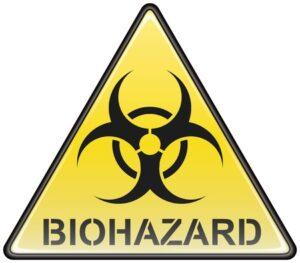 An unattended death occurs when a person dies and isn’t discovered for an extended period of time. In the interim, the body may undergo significant decomposition and expose nearby people to a number of serious health hazards. Today we’ll address a few of the most common hazards associated with improper unattended death cleanups.
An unattended death occurs when a person dies and isn’t discovered for an extended period of time. In the interim, the body may undergo significant decomposition and expose nearby people to a number of serious health hazards. Today we’ll address a few of the most common hazards associated with improper unattended death cleanups.
Exposure to bloodborne pathogens
In general, the most significant hazard associated with unattended deaths is exposure to bloodborne pathogens that might be found in the area. Pathogens like Hepatitis B and HIV can be found in the bodily fluids of a deceased person and survive for days after the person has died. If these fluids aren’t cleaned properly, microscopic bloodborne pathogens can contribute to disease transmission long after the body has been removed from the scene.
Emotional Trauma
In addition to posing potential health risks, an unattended death can also cause significant emotional trauma to the person who discovers it. This is especially true if the person is a friend or family member of the deceased.
But What About Airborne Bacteria?
Contrary to popular belief, the decomposition process does not actually foster the growth of hazardous airborne bacteria. It can, however, cause severe odors that will linger on nearby surfaces if the premises are not properly decontaminated. That’s why we use tools like ozone machines to completely eliminate odors in the air and on surfaces.
At Anubis SceneClean, our professional unattended death cleanup services are specifically designed to prevent disease transmission and needless emotional trauma in our clients. We understand that these experiences can be deeply troubling, and we do our best to eliminate all signs of the unattended death on the premises. To learn more, feel free to give us a call or contact us online today.



